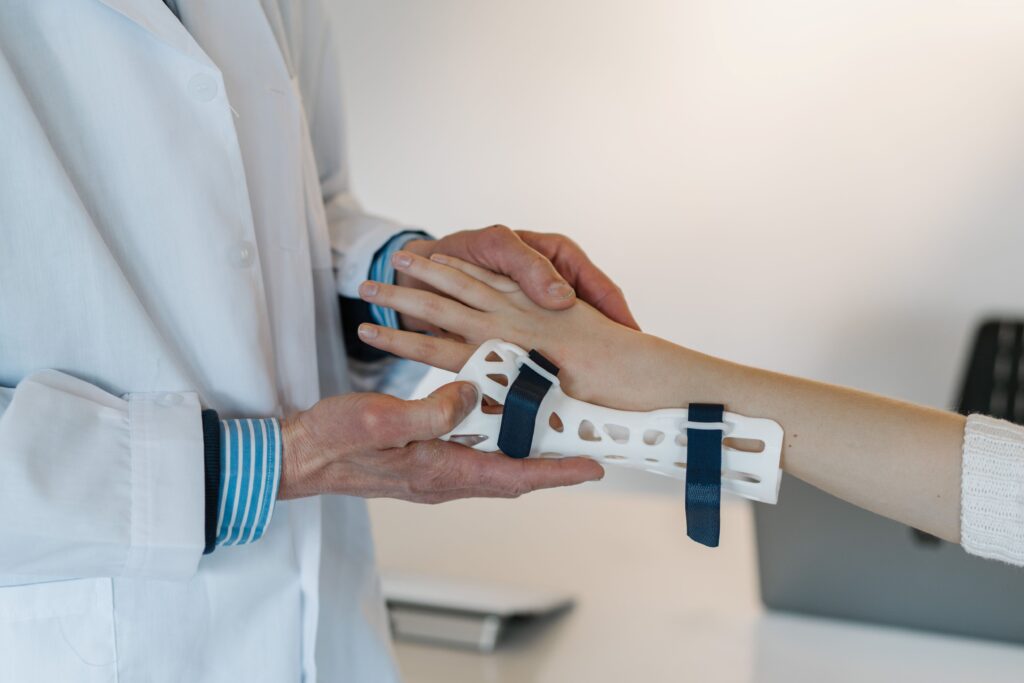
For years, the solution for fractures was a bulky plaster cast that was quite uncomfortable. It was also unbearably hot to have when the temperatures were high. You must put them on hold if you enjoy sports, such as swimming and kayaking.
Thermoplastic splinting supports fractures, rheumatology disorders, and other orthopaedic problems without the drawbacks of traditional splints.
Thermoplastic splints are custom-made using mouldable plastic. They fit the injured limb perfectly, whether the finger, wrist, or hand. Since they are lighter, waterproof, and offer more protection.
However, thermoplastic splinting also has its drawbacks. When exposed to hot water, the plastic softens and changes shape. It also retains water for a long time, exposing your skin to moisture for too long. It can also become damaged if exposed to water consistently.
How Thermoplastic Splints Work
Thermoplastic hand splints performs the same tasks as other splints, only that it offers greater comfort and flexibility. When your doctor determines that your joint needs to be stretched and immobilized, a custom hand splint will be handy.
So as your injury heals, the joint, bones, and tendons are held in place and are protected.
When you wear a custom hand splint over a prolonged period, the muscles and joints adjust to the new position. The muscles will then realign to the right place. Fortunately, thermoplastic splints allow an extensive range of movement. They are not as restrictive as traditional splints.
In cases where the injury is not too severe, your doctor may recommend removing the hand splint in Singapore when you are showering or performing tasks that will expose the splint to water.
When used correctly, thermoplastic hand splints will;
- Keep the muscles from shortening. When you suffer an injury that restricts joint movements, the connective tissues become less flexible. Over time, the muscles will start to shorten. Soon, you’ll have an even bigger problem because your hand will become stiff, even when it heals.
- Prevent the muscles from becoming too tight. Cleaning and dressing the joint will be difficult when your muscles get too tight.
- Shorten the therapy period because you will heal faster. When your joints become too stiff, the physiotherapists will have to work harder and for longer to get the joints to move freely.
- Allow you to attempt exercising the joint slowly without risking any damage. Since it is custom fit, it will hold the joint tightly, so there is no risk of further injuries even when exercising.
Tips On How To Monitor The Thermoplastic Splint
You can monitor your finger or joint’s response when you get a thermoplastic splint. You should monitor the custom splint, and let your doctor know if you notice any of the following.
- The splint is loose and not holding the joint or finger as it should.
- If the splint is too tight. This will result in numbness, pain, tingling, and a change in the colour of your fingers or toes.
- Broken skin and pain. Since it is made of plastic, it is not uncommon for the thermoplastic splint to collect moisture and cause the skin to break. This is one of the reasons you are sometimes asked to keep the splint on for a few hours and remove it to allow the skin to breathe. You should see a doctor if you feel pain and see broken skin.
Despite their drawbacks, thermoplastic splints are a significant improvement from bulky plasters. However, technology brings with it greater responsibility.
You will need to monitor your injury and alert the doctors immediately if you feel some unusual discomfort, especially if there is a risk of infections.
You must also know the dos and don’ts when wearing the thermoplastic splint.